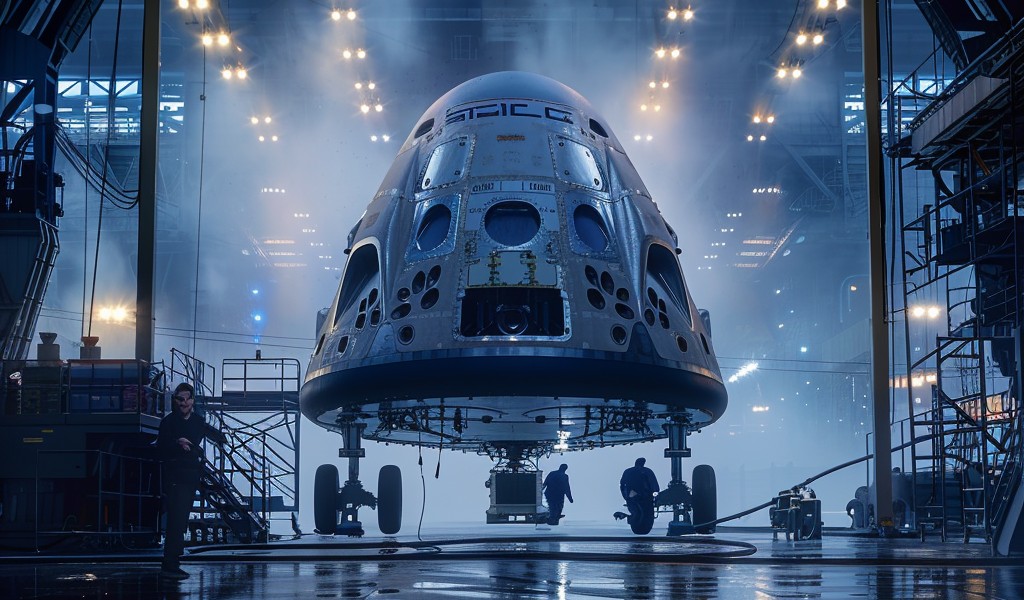Boeing’s Starliner commercial crew program continues to face significant financial challenges, as the aerospace giant reported a staggering loss of nearly $6.2 billion in the last quarter. This was announced during a recent conference call led by Boeing’s new CEO, Kelly Ortberg, who is under pressure from labor groups and regulatory bodies to turn the company’s fortunes around.
Despite the substantial losses, Ortberg did not address the Starliner program during the call, a decision that raises eyebrows given the project’s high profile and ongoing financial struggles. The Starliner program, while a smaller segment of Boeing’s overall operations, has become a focal point of concern due to its unprofitability and the mounting losses associated with it.
In the latest report filed with the Securities and Exchange Commission (SEC), Boeing disclosed an additional $250 million loss attributed to the Starliner program, bringing the total losses to an alarming $1.85 billion. These losses have accumulated over several years, primarily due to persistent technical issues and project delays that have plagued the spacecraft’s development.
Boeing operates the Starliner program under a fixed-price contract with NASA, which means that the company bears the financial risk for any cost overruns. This arrangement is advantageous for NASA, as it minimizes the government’s financial exposure while placing the onus of delivering the project within budget on Boeing. However, the continued financial losses indicate that the program has not met its initial expectations.
Since the last test flight of the Starliner ended in disappointment, Boeing has refrained from providing updates regarding the future of the spacecraft. Following the landing of Starliner in early September, the company issued a brief statement indicating that managers would review the data and determine the next steps for the program. This lack of communication has left many stakeholders in the dark about the future of the project.
A week after the landing, Boeing’s Chief Financial Officer, Brian West, reiterated the need for a thorough evaluation of the Starliner program. “There is important work to determine any next steps for the Starliner program, and we’ll evaluate that,” he stated during a conference organized by Morgan Stanley. This statement underscores the uncertainty surrounding the program and the challenges that lie ahead.
Starliner recently concluded its third test flight, which occurred a little over six weeks ago. This mission was particularly notable as it marked the first time that astronauts were transported to orbit aboard a Starliner spacecraft. However, the mission’s success was overshadowed by the subsequent challenges faced by Boeing in the aftermath of the flight.
As Boeing grapples with its financial woes, the future of the Starliner program remains precarious. The company has not provided a clear timeline for the next phase of the project, leaving both investors and industry analysts concerned about the viability of the spacecraft in the competitive landscape of commercial spaceflight.
In light of these developments, industry experts are closely monitoring Boeing’s actions and decisions regarding the Starliner program. The outcomes of the upcoming evaluations and the company’s strategic direction will be crucial in determining whether Boeing can recover from its current financial setbacks and successfully deliver on its commitments to NASA and the broader aerospace market.
The Starliner program’s challenges come at a time when the demand for commercial crew transportation is increasing, with several companies vying for contracts and partnerships with NASA and other space agencies. Boeing’s ability to navigate these turbulent waters will be essential in maintaining its position as a key player in the aerospace sector.
As the situation unfolds, stakeholders will be watching closely to see how Boeing addresses the issues plaguing the Starliner program and whether the company can implement the necessary changes to secure its future in the competitive landscape of commercial space exploration.





